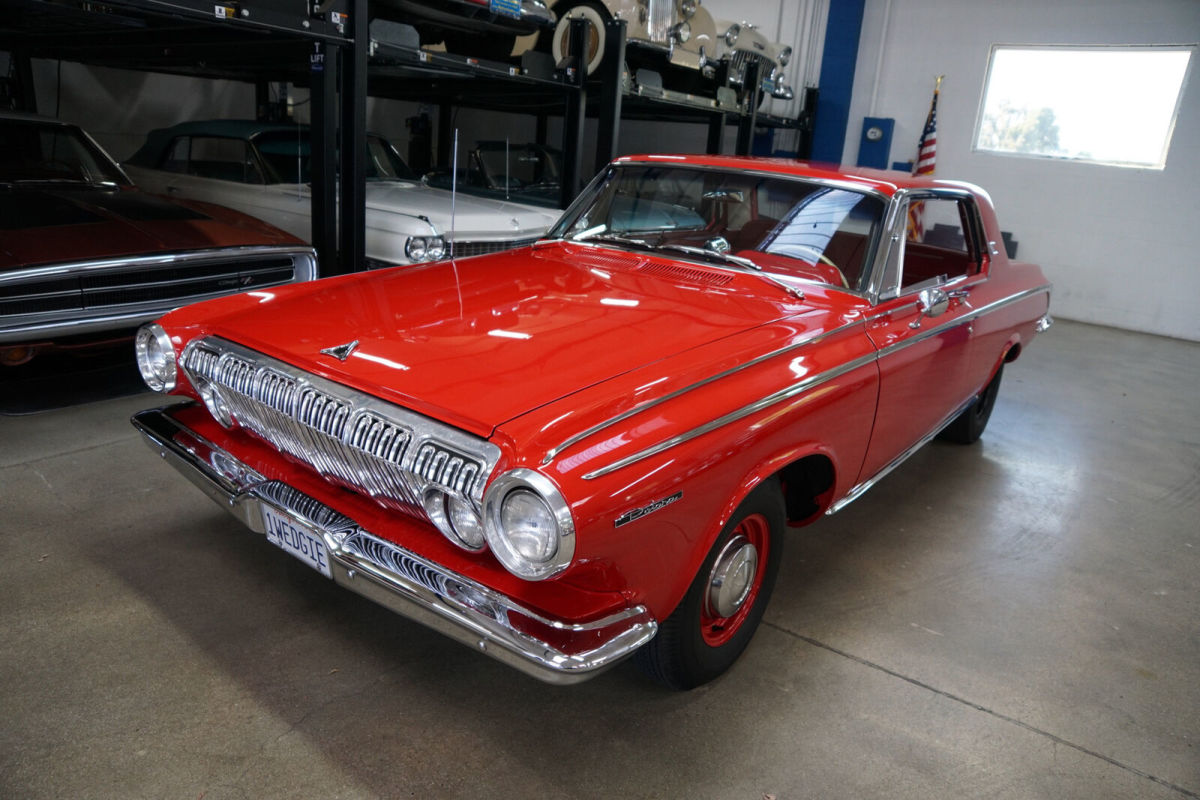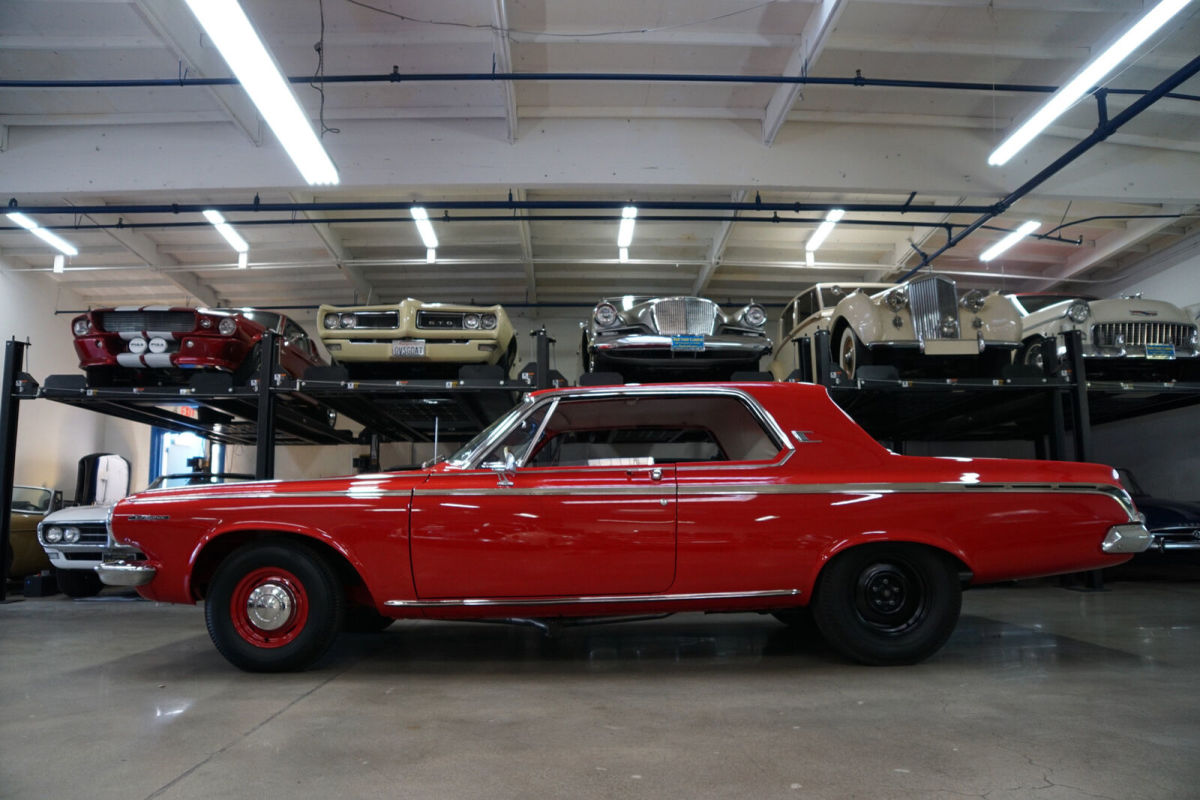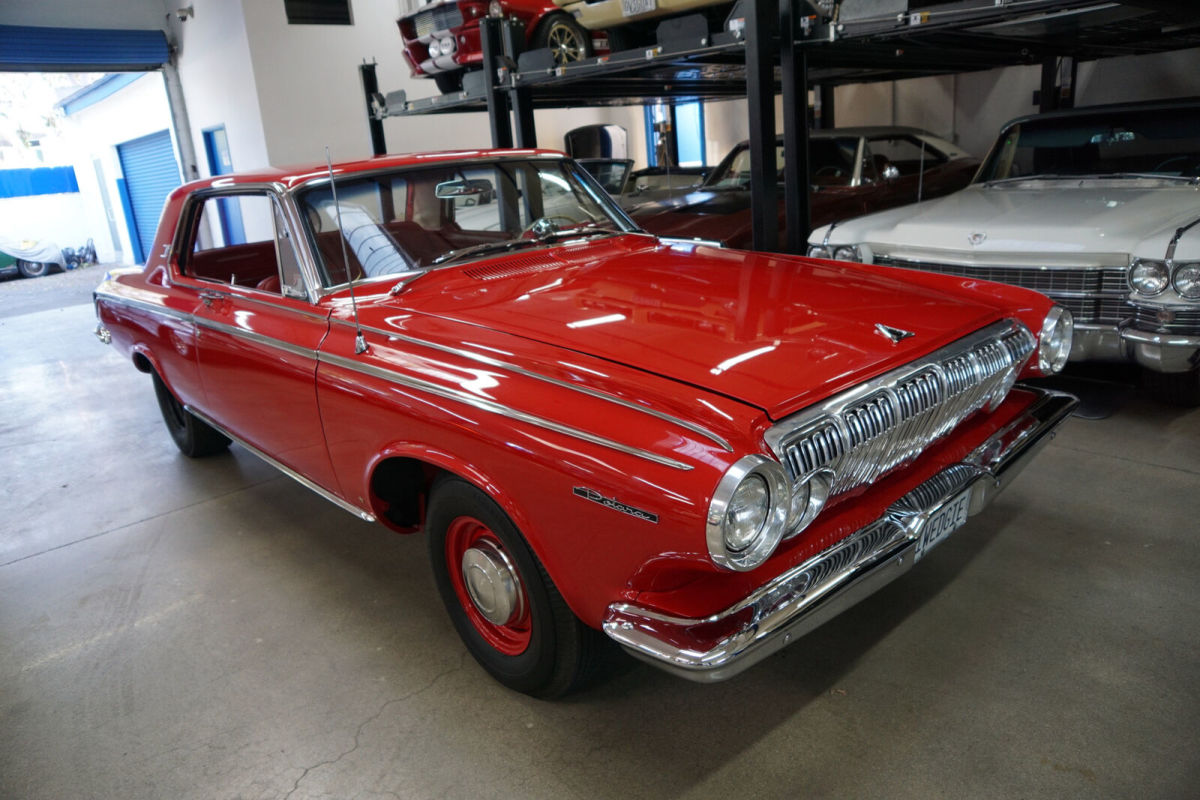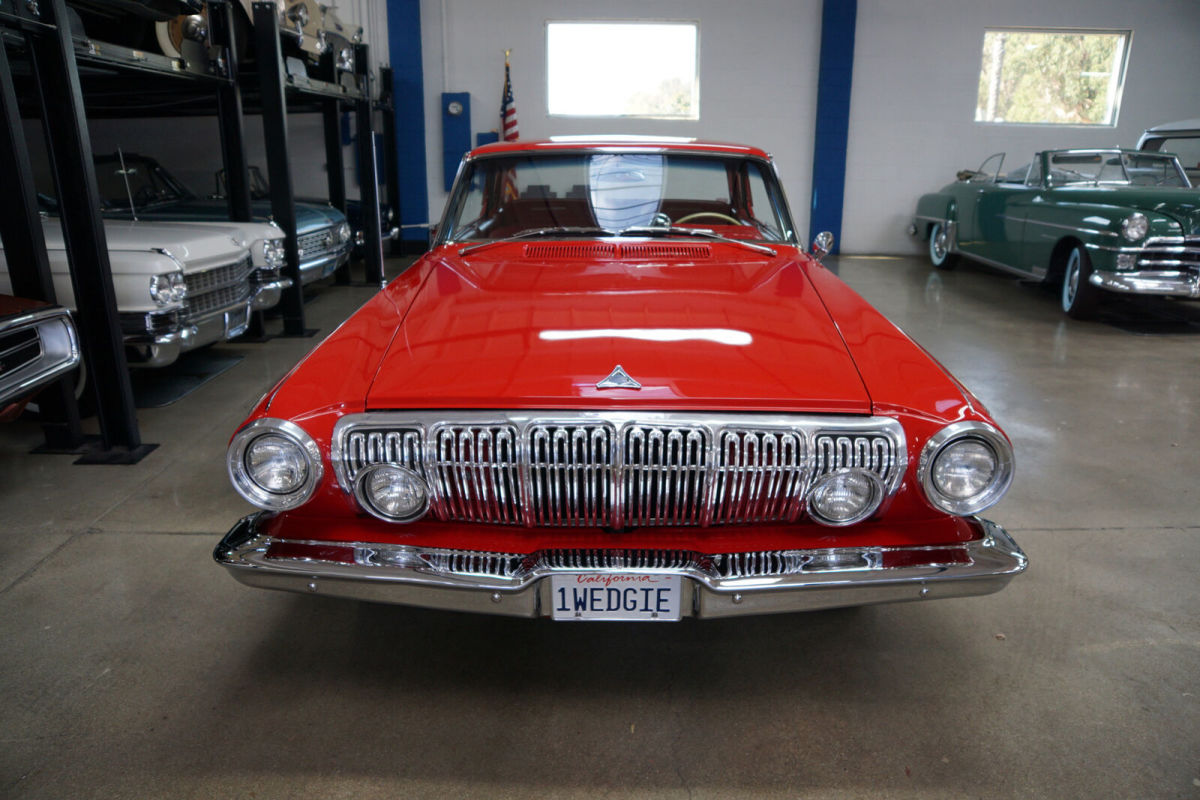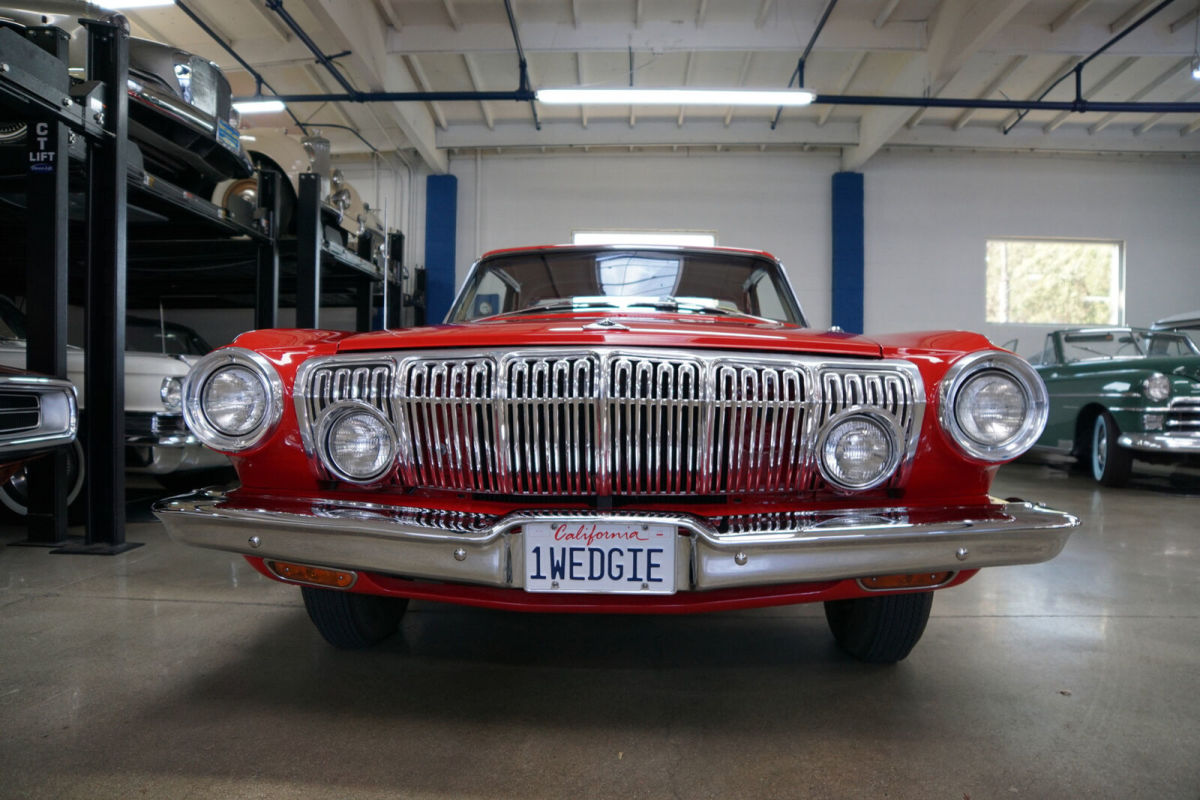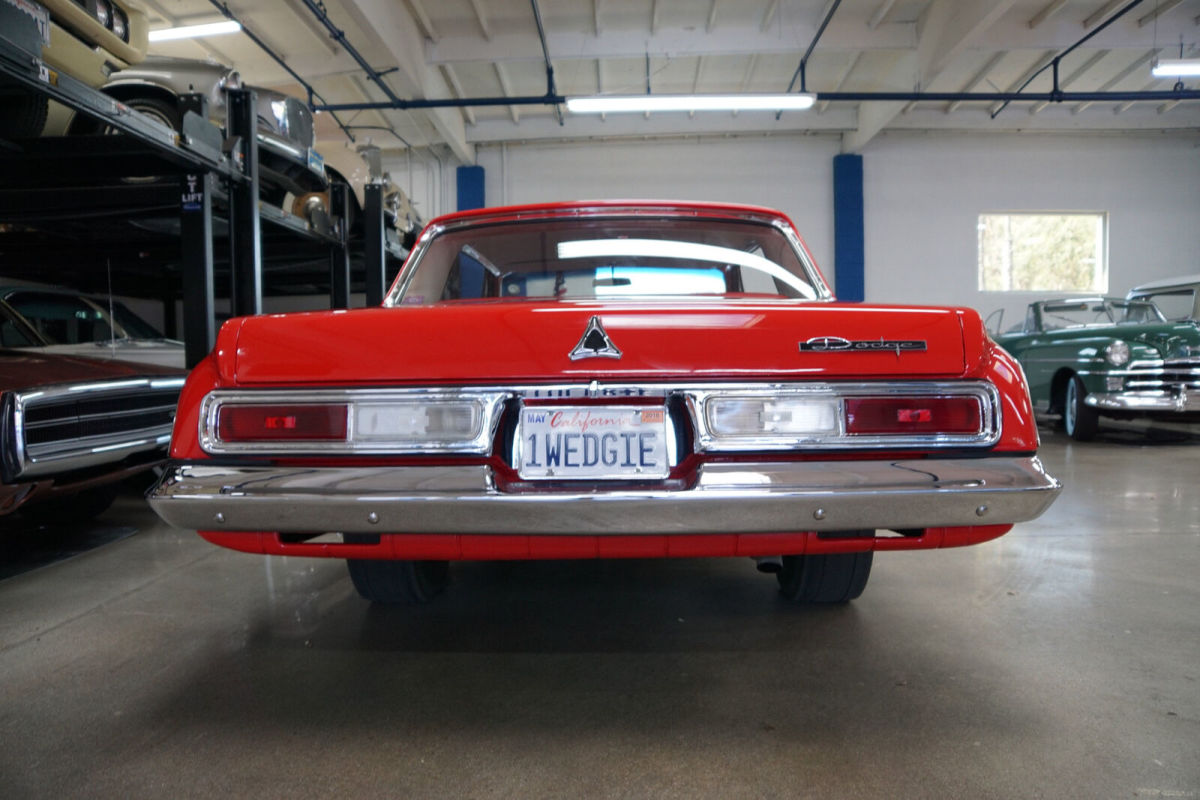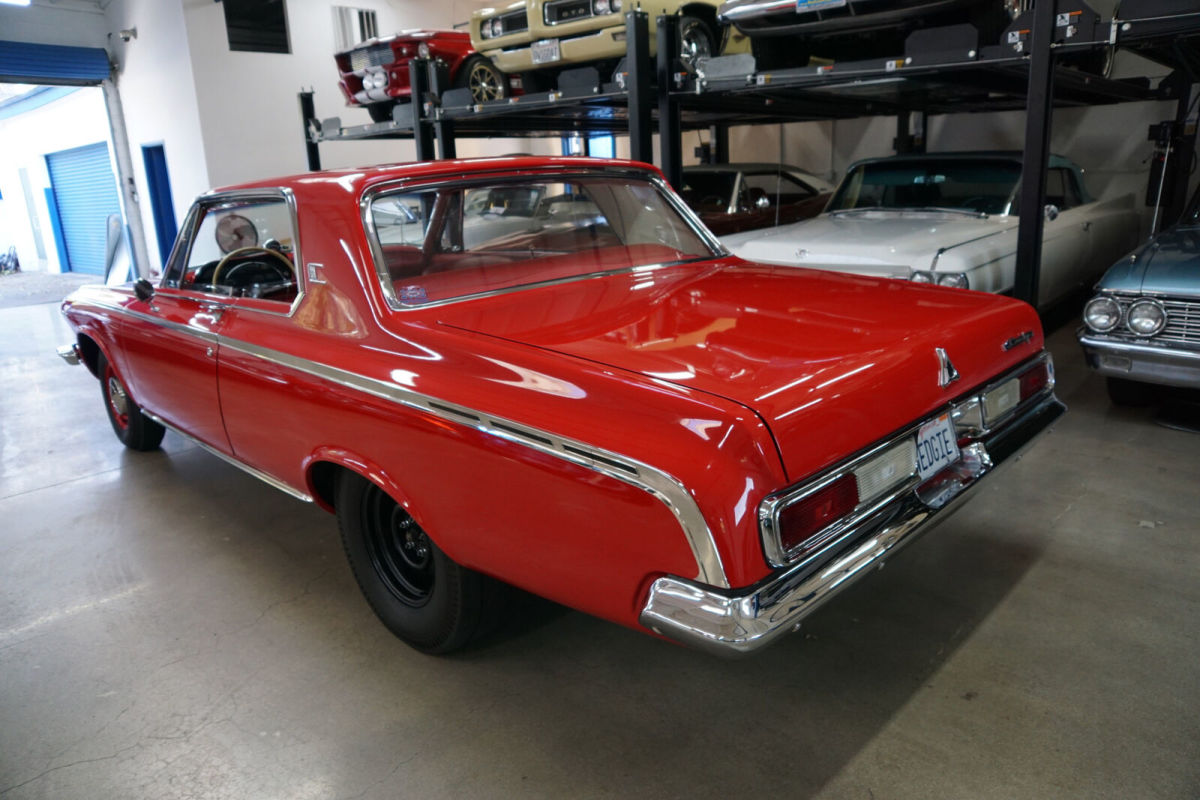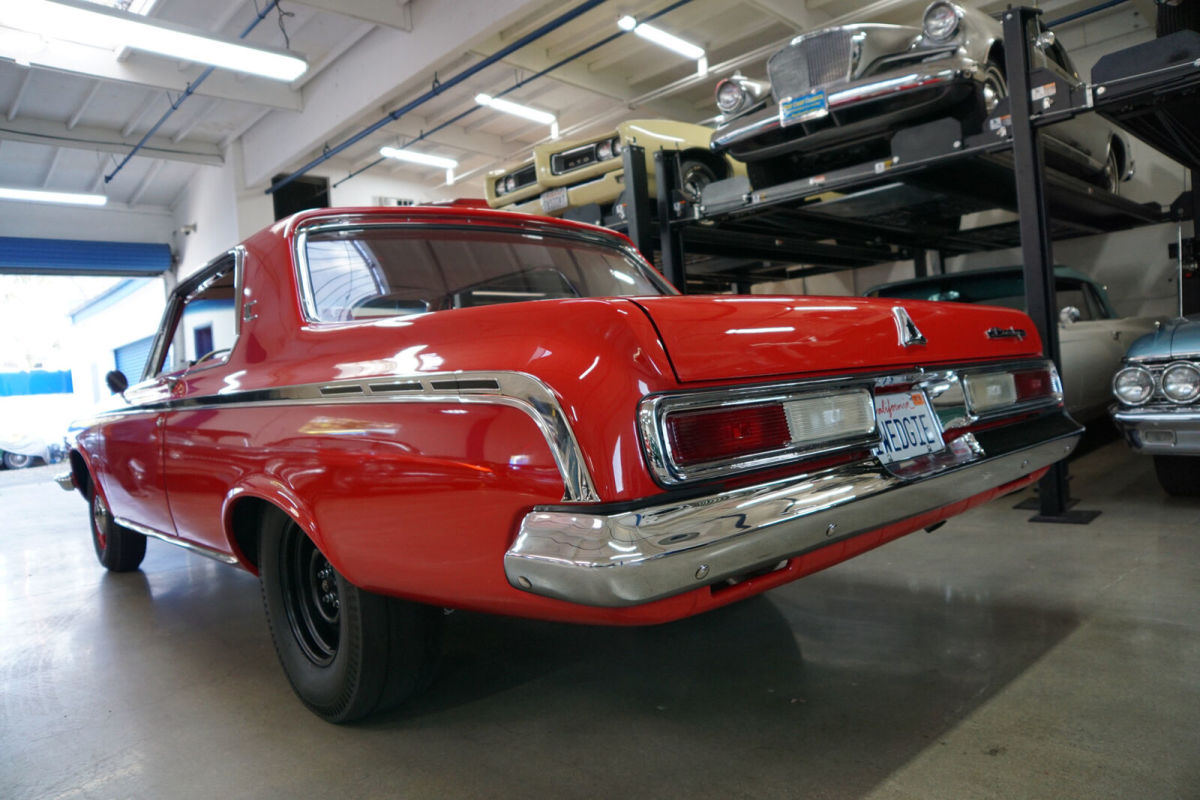28,382 Miles 426 V8 Max Wedge Automatic2 Dr
- Condition: Used
- Make: Dodge
- Model: Polara 426 V8 Max Wedge
- Type: 2 Dr
- Year: 1963
- Mileage: 28382
- VIN: 6335166153
- Color: Red
- Engine size: 426 V8 Max Wedge
- Power options: --
- Fuel: Gasoline
- Transmission: Automatic
- Drive type: --
- Interior color: Red
- Options: --
- Vehicle Title: Clear
- Location: Torrance, California, United States
Description
West Coast Classics are proud to present an exceptionally straight 1963 Dodge Polara 2 Door Hardtop with a 426 Max Wedge engine and which is a recently comprehensively unibody up restored tribute to a very rare and original Mopar - with a date correct 426 Max Wedge V8 engine matched to it's original 'Torqueflite' push button automatic transmission!For 1961, Dodge dropped the Matador, leaving the Polara as the sole 'senior' Dodge model. Darts on the shorter wheelbase continued. Up front, the massive bumper treatments that had been a Dodge hallmark since 1957 were replaced with a simple bar design, above which was a massive concave grille shared with the Dodge Dart. This was the first Chrysler B-Body.
The new Dodge models were sized closer to Ford's new intermediate Fairlane than to Ford's or GM's full-size models and the Polara 500 boasted Bucket Seats and only V8 engines. Among the B-Bodied 1962 Dodges was this bucket-seated sporty model called the Polara 500. It was available as a two-door hardtop and a convertible, and a 4-door hardtop was added in December. Standard equipment included a 305-horsepower 361 cubic inch V8 with four-barrel carburetion and dual exhaust. Positioned beneath the Polara 500 in descending order were the Dart 440 and the Dart 330. For 1962 there was no model named simply 'Polara.'
In 1962, Chrysler introduced its new high-performance version of the 413 RB Block motor: the Maximum Performance Wedge. This engine had been in development since 1959 and employed "short ram" induction, wherein the carburetors were fitted diagonally on the intake manifold. The "Max Wedge" option was available exclusively in Chrysler's new-for-1962 intermediate B Platform in Dodges and Plymouths only. Chrysler had developed the option in part to capitalize on the rising popularity in NHRA super stock racing. Although Max Wedge cars were street legal, they were intended for racing purposes.
These early Dodges were available only with optional V8 engines of up to 413 cu in (6.8 L). These mid-sized Dodges (and similar models from Plymouth) competed successfully as stock cars in NASCAR races, and in stock-automatic classes in drag racing, where their smaller size and lighter weight gave them an advantage over the larger cars from Ford and General Motors. In fact the instant success of the NASCAR single 4 barrel carbureted version of the Hemi was overshadowed by the fact that in testing, the dual quad drag racing version was not any quicker than the 426 Max Wedge engine! The release of the Hemi drag race cars was actually then delayed until the engineers worked on the problem which was that a new camshaft was needed.
First-year Max Wedge engines were 413 cubic inches and came in 410 and 420 horsepower versions. Dodge called its engine the "Ramcharger 413" while Plymouth called it the "Super Stock 413." In 1963, the engine's displacement increased to 426 cubic inches as the bore was increased from 4.19 to 4.25 inches. In May of that year, an improved version of the 426 was released, named the "Stage II." No motors were ever named "Stage 1." 1963-engines were available in 415 and 425 horsepower versions. 1964 was the final year of the Max Wedge option. The engine for the third year was named the "Stage III." Max Wedge cars equipped with four-speed transmissions were only produced in the final year, as prior to that point Chrysler did not have a manual transmission that could handle the power of the engine. In 1964, only 61 Dodges and 65 Plymouths were equipped with Chrysler's A-833 manual transmission.
Max Wedge cars are an essential part of automotive history as they are the first vehicles that can be classified as "muscle cars" by the strict definition as an intermediate-bodied car with a big-block motor. While both General Motors and Ford introduced intermediate platforms the same year, it was not until later that they outfitted their newly sized cars with big blocks. The 1962 413 Max Wedge Dodges and Plymouths preceded the 427 Ford Fairlane Thunderbolt (1964) and 390/427 Ford Fairlane (1966), 389 Pontiac GTO (1964), 396 Chevrolet Chevelle (1965), 400 Buick Gran Sport (1965), 400 Oldsmobile 442 (1965), and 427 Mercury Comet Cyclone (1964) and 390 Mercury Cyclone (1966). Despite their historical significance and low production numbers, Max Wedge cars had not until recent years reached the same level of collectible desirability as other comparable muscle cars. This is, in part, was most likely due to their race specificity.
The basic body of the 1962 model continued until 1964, revised and lengthened by the new Chrysler Vice President of styling Elwood Engel. The Polara range eventually grew to include a 4-door sedan. For 1963 and 1964, the Polara 500 was available only as a convertible or hardtop coup. For the 1963 model year, the wheelbase was increased to 119 inches (3,023 mm) and the car received new sheet metal. The Dart name was reassigned to Dodge's line of compact cars that had previously been known as the Dodge Lancer. Positioned below the Polara were the plain 440 and 330.
This particular example has been meticulously restored with no expense spared and with great attention to de
More Dodge classic cars for sale
 1963 Dodge Polara Max Wedge 21,402 Miles Onyx Hardtop 426 Max Wedge V8 4 Speed M
1963 Dodge Polara Max Wedge 21,402 Miles Onyx Hardtop 426 Max Wedge V8 4 Speed M
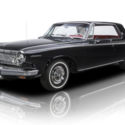 1963 Dodge Polara Max Wedge 21402 Miles Onyx Hardtop 426 Max Wedge V8 4 Speed Ma
1963 Dodge Polara Max Wedge 21402 Miles Onyx Hardtop 426 Max Wedge V8 4 Speed Ma
 Wedge Clone 413ci Wedge Engine Nice Straight Exterior Snazzy Red Interior
Wedge Clone 413ci Wedge Engine Nice Straight Exterior Snazzy Red Interior
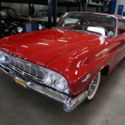 20447 Miles 318/230HP V8 Automatic2 Dr Hardtop
20447 Miles 318/230HP V8 Automatic2 Dr Hardtop
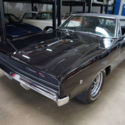 0 440 c.i. 500 HP V8 Automatic2 Dr Hardtop
0 440 c.i. 500 HP V8 Automatic2 Dr Hardtop
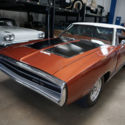 0 440/375HP V8 Automatic2 Dr Hardtop
0 440/375HP V8 Automatic2 Dr Hardtop
 1964 Dodge Polara 500 14142 Miles Red Hardtop 426 Street Wedge 4 Speed Manual
1964 Dodge Polara 500 14142 Miles Red Hardtop 426 Street Wedge 4 Speed Manual
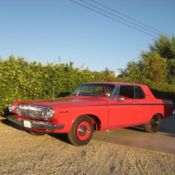 Max Wedge
Max Wedge
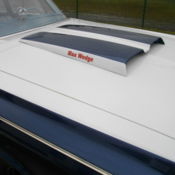 1964 Dodge 330 Max Wedge 426
1964 Dodge 330 Max Wedge 426
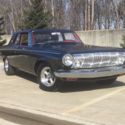 1963 Dodge 330 Max Wedge
1963 Dodge 330 Max Wedge
 1963 Dodge Polara Max Wedge 21,402 Miles Onyx Hardtop 426 Max Wedge V8 4 Speed M
1963 Dodge Polara Max Wedge 21,402 Miles Onyx Hardtop 426 Max Wedge V8 4 Speed M
Year: 1963
Mileage: 21,402
Mileage: 21,402
 1963 Dodge Polara Max Wedge 21402 Miles Onyx Hardtop 426 Max Wedge V8 4 Speed Ma
1963 Dodge Polara Max Wedge 21402 Miles Onyx Hardtop 426 Max Wedge V8 4 Speed Ma
Year: 1963
Mileage: 21,402
Mileage: 21,402
 Wedge Clone 413ci Wedge Engine Nice Straight Exterior Snazzy Red Interior
Wedge Clone 413ci Wedge Engine Nice Straight Exterior Snazzy Red Interior
Year: 1963
Mileage: 59500
Mileage: 59500
 20447 Miles 318/230HP V8 Automatic2 Dr Hardtop
20447 Miles 318/230HP V8 Automatic2 Dr Hardtop
Year: 1961
Mileage: 20447
Mileage: 20447
 0 440 c.i. 500 HP V8 Automatic2 Dr Hardtop
0 440 c.i. 500 HP V8 Automatic2 Dr Hardtop
Year: 1968
 0 440/375HP V8 Automatic2 Dr Hardtop
0 440/375HP V8 Automatic2 Dr Hardtop
Year: 1970
 1964 Dodge Polara 500 14142 Miles Red Hardtop 426 Street Wedge 4 Speed Manual
1964 Dodge Polara 500 14142 Miles Red Hardtop 426 Street Wedge 4 Speed Manual
Year: 1964
Mileage: 14,142
Mileage: 14,142
 Max Wedge
Max Wedge
Year: 1963
Mileage: 650
Mileage: 650
 1964 Dodge 330 Max Wedge 426
1964 Dodge 330 Max Wedge 426
Year: 1964
Mileage: 5,000
Mileage: 5,000
 1963 Dodge 330 Max Wedge
1963 Dodge 330 Max Wedge
Year: 1963
Mileage: 20,133
Mileage: 20,133
